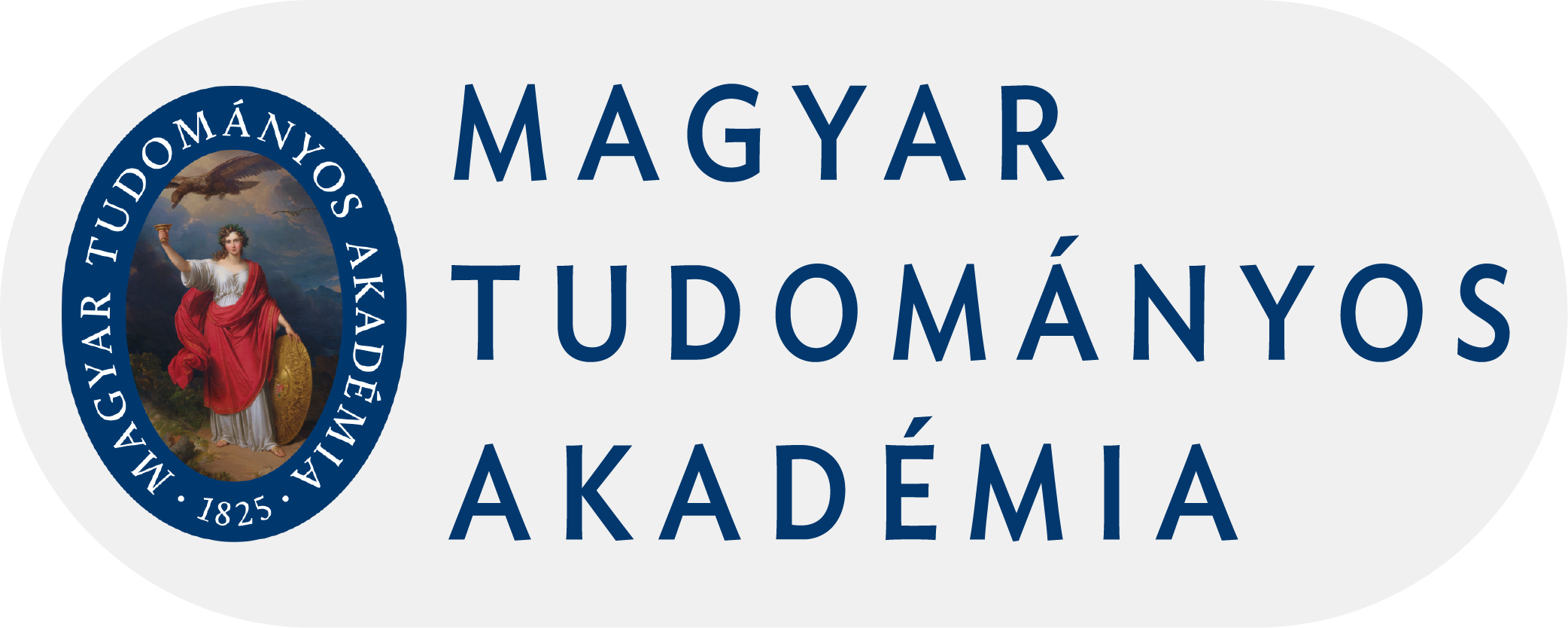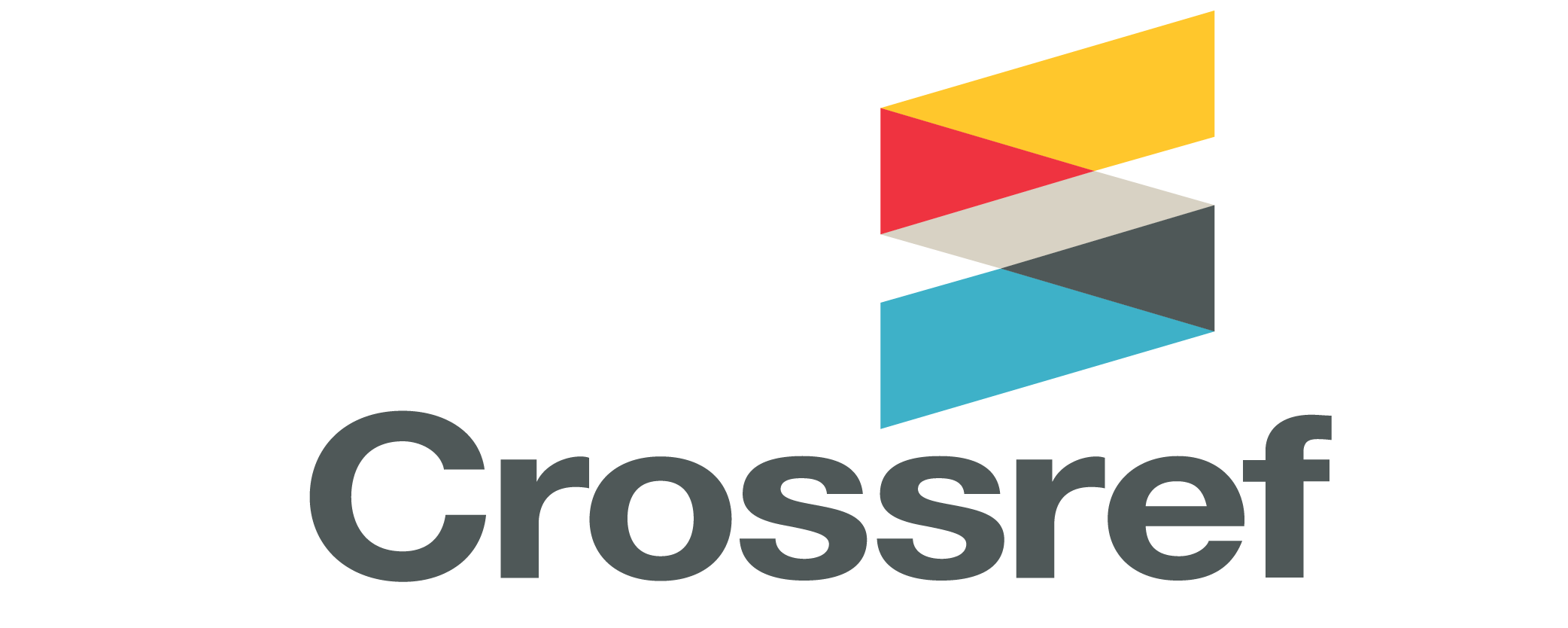Search
Search Results
-
Powdery mildew infection dependent on weather factors in vineyards near Keszthely in 2008
55-59.Views:371Weather conditions are extremely influential on grapevine productivity and quality. High temperature and humidity makes favorable conditions for powdery mildew infection respectively. The meteorological data around Keszthely, Hungary show the vegetative period is dryer and warmer than it was closely hundred years ago. We examined the development of powdery mildew infection on two variet ies Vitis vinifera L. cv Italian Riesling and cv Merlot in relation with meteorological data. No primer infections were appeared in the vineyard. The year of 2008 was quite ideal for the accumulation of Erysiphe necator in the experimental vineyard. Although the dry summer can lower the infection, but if the high temperature is coupling with rainfall, the possibilities of powdery mildew infection is going to grow higher during the upcoming years.
-
The effect of nitrogen supply on specific yield and fruit quality of apple (Malus domestica Borkh.)
7-21.Views:646The aim of the present study was to determine the effect of nitrogen supply on yield and fruit quality of apple cultivars and to explore the relationships between canopy density and the different fruit quality parameters.
The experiments were carried out at Kálmánháza, in Eastern Hungary in a private orchard in 2003-2004. The response of four apple cultivars ('Elstar', 'Gala Prince', 'Granny Smith', 'Idared') to different nitrogen dosages was studied. The assessed and calculated indices were: yield, fruit diameter, fruit height, shape index, fruit mass, firmness, dry matter content and colouration. The results indicated that nitrogen fertilization has a significant effect on the yield and fruit quality of apple cultivars. The calculated specific yield values were reduced by the application of nitrogen via the increase in the volume of the canopy. An opposit trend was observed for fruit diameter, fruit height and fruit weight, which increased with increasing nitrogen supply. The reduced shape index caused flattening of fruits.
However, the improvement of fruit quality via increasing nitrogen dosage is only virtual, since these dosages increase the fruit size, but firmness, dry matter content and colouration are diminished, which decreases the value of the fruits on the market.
The authors also studied the relationships between canopy density responsible for assimilation and light supply of the fruits and the different fruit quality parameters. The closest linear inversely proportional relationship was found in the case of colouration. There was a negative linear relationship between canopy density and firmness or dry matter content. The relationship between canopy density and fruit mass could be described by a quadratic polinomial function.
-
Preliminary study on micro area based spatial distribution of powdery mildew in an organic apple orchard
35-37.Views:362In this study, the objective was to report a preliminary study on micro area based spatial distribution of powdery mildew in an organic apple orchard. Results showed that number of symptomatic plant part ranged between 11 and 20 on shoot and between 9 and 24 on fruit. Number of asymptomatic plant part ranged between 85 and 109 on shoot and between 133 and 206 on fruit. Disease incidence ranged between 13.8 and 17.6% on shoot and between 9.1 and 11.3% on fruit. Disease aggregation index ranged between 0.098 and 0.228 on shoot and between 0.043 and 0.108 on fruit. One of the four trees showed significant within canopy aggregation of disease for shoot powdery mildew symptoms in both years. For leaf powdery mildew, all tree exhibited random patterns in both years.
-
Brown rot blossom blight and fruit rot of apricot in Hungary
139-141.Views:2345The aim of our two-year study was to assess incidence of brown rot blossom blight and fruit rot caused by Monilinia laxa in 2003 and 2004. Assessments of incidence were made on cv. Bergeron (susceptible to brown rot) in a flatland and a hilly growing area (at Cegléd and Gönc, respectively). In both locations, plant protection was performed according to the integrated fruit production guidelines and small untreated plots were set up for each cultivar in both years. In 2003, when weather conditions were dry and hot, brown rot incidence was low (less than 10%) on both blossoms and fruits. Monilinia laxa did not cause significantly different blossom blight and fruit rot at the hilly (Gönc) area compared to the flatland, not even in untreated plots. However, in 2004, when spring and summer weather conditions were wet and cold, Incidence reached 95% for blossom blight and 33% for fruit rot in the untreated plots. Blossom blight incidence was 1.5-2 times higher in the flatland area compared to the hilly growing area. During the blooming period of apricot, two (at flower bud stage and at full bloom) and three (at flower bud stage, at full bloom and at petal fall) fungicide applications were necessary for the successful control at Gönc and Cegléd, respectively. The difference between the two orchards was due to the fact that blooming started one week later in the hilly region (at Gone) than in the flatland region (at Cegléd), therefore, the critical weather period coincided with blooming in the orchard in the hilly region only partially. Fruit rot incidence was similar in both regions as the amount and distribution of rainfall were similar during the fruit ripening period.
-
Disease progress of apple scab caused by Venturia inaequalis in environmentally friendly growing systems
56-62.Views:399Progression of apple scab epidemic in six apple cultivars, including two current and susceptible (Gala Must, Elstar), two old (Egri Piros, Darusóvári), and two resistant cultivars (Relinda, Releika), were described and analysed in a two-year-study, in two environmental-friendly growing systems (organic and integrated). Curves of disease progress, linear regression analysis of transformed disease incidence data and Area Under Disease Progress Curves (AUDPC) were used to characterise the epidemic processes of the selected cultivars. Cumulative disease progress curves showed continuous but asymmetrical scab development on the moderate or highly susceptible cultivars Gala Must, Elstar and Egri Piros, and on the tolerant or resistant cultivar Darusóvári and Relinda, in both systems. The cultivar Releika showed no symptoms either on fruit or leaf. In linear regression analysis, the best linearisation was given by logistic transformation. Adequate parameters leaf disease incidence rate, of obtained from a regression equation, were higher in the organic system than in the integrated system. Values of AUDPC showed great differences in leaf disease incidences among cultivars and between growing systems. AUDPC gave more differences for comparison of progresses of disease epidemic than growth rate of disease in different systems of disease control. Moreover, the obtained results were compared with similar studies on different pathosystems, and biological interpretations of the analyses are discussed below.
-
Incidence of postharvest decays on cultivars of pear, apricot, sour cherry and peach under two storage conditions
63-65.Views:17232In this two-year study, postharvest decays of pear, apricot, sour cherry and peach cultivars under two storage methods (TC and CA) were determined after four monthes storage periods; and then causal agents of postharvest decays of two pear cultvars were idenfified under traditional cold storage conditions. Results showed that postharvest decay was lower under controlled atmosphere compared to traditional cold one. Decay was lower on pear and the largest deacy occured on peach and apricot cultivars. Cultivars of fruit species also showed differences in incidence of fruit decays. Incidence of decays was independent on year effect. Under controlled atmosphere, postharvest decay ranged between 0 an 8% for pear, and between 5 and 12% for apricot, and between 6 and 11% for sour cherry, and between 5 and 15% for peach. Under traditional cold storage, postharvest decay ranged between 16 an 21% for pear, and between 15 and 39% for apricot, and between 10 and 22% for sour cherry, and between 19 and 33% for peach. Incidence of pear fruit damage ranged between 7.5 and 12.3%. Most damage started from injured fruit or wounded fruit. Five types of damage occurred ont he pear fruits in both years: Penicillium spp., Monilinia spp., Chondrostereum spp., other pathogens and mechanical injury. The most common damage was caused by Penicillium spp., Monilina spp. and Chondrostereum spp. On both pear cultivars in both years.
-
Fruit bearing shoot characteristics of apricot and sweet cherry cultivars in Hungary
107-110.Views:748: Our study was carried out on 23 apricot and 9 sweet cherry cultivars in February 2005. Fruiting laterals were classified into four groups (0-10 cm, 10-20 cm, 20-40 cm and >40 cm) and then the density and setting of flower buds were evaluated and expressed as bud/cm. The flower bud density of four types of fruit bearing shoots and the changes in the frost resistance were studied. Shoots were collected from a young orchard in Gone (apricot), Siófok (sweet cherry) and Nagykutas (sweet cherry). There were significant differences among the cultivars in the density of flower buds. The number of flower buds/cm shoot length ranged between 0.91 and 2.20 in the average of the different fruit bearing shoot types on apricot. Based on the results, the bud density of shorter shoots is generally higher on apricot, but this is not valid for all cultivars. For cvs. Magyarkajszi and Ceglédi bíborkajszi, the highest flower bud density was detected on shoots of medium length (10-40 cm). There were fivefold and almost twofold (1.85) differences in bud density among cultivars on shoots shorter than 10 cm length and longer than 40 cm length, respectively. The ratio of the bud densities of the different types of shoots also ranged between wide boundaries. For cvs. Bayoto, Toyesi and Toyiba this ratio was 2.5-3.5, while for cv. Magyarkajszi it was 1.3.
In the average of fruit bearing shoots on sweet cherry, cv. Bigarreau Burlat (1.10 bud/cm) and cv. Germersdorfi 45 (0.61 bud/cm) had the largest and the lowest flower bud density, respectively. Among the fruit bearing shoots, the largest flower bud density was in the group of 0-10 cm fruiting laterals. Among cultivars, cv. Bigarreau Burlat had the largest bud density. In the groups of n- i 0 cm, 10-20 cm, 20-30 cm and 30-40 cm fruiting laterals, the lowest flower bud density was for cv. Linda, cv. Germersdorfi 45, cv. Ferrovia and cv. Sunburst, respectively. On cvs. Van and Bigarreau Burlat, large numbers of double-set flower buds were observed on the fruit bearing shoots longer than 20 cm. Fruit setting differed on the different types of fruit bearing shoots, with the lowest value measured on above 40 cm shoots. The highest fruit setting was observed on cv. Katalin, while the lowest value was measured on cv. Germersdorfi 3.
-
Fruit injury in organic fruit production and its relationship to brown rot caused by Monilinia spp.
7-9.Views:480In a two-year Hungarian study, the temporal progress of brown rot incidence and various injury types were studied in organic fruit orchards and the relationship between brown rot and injury types was determined. Results showed that brown rot reached an almost 20% incidence level in both years. Total injury incidence reached up to 5.3 and 19.8% in the two years. In all cases, insect injury incidence was the highest among injury types in most assessment dates. Incidence levels of other injury types (bird injury, mechanical injury and other injury) began to increase, but none of those reached levels >4%. Pearson’s correlation coefficients showed that brown rot incidence correlated significantly with the incidence of insect injury. In addition, brown rot incidence and the incidence levels of bird injuries was also significantly correlated. High injury and brown rot incidence levels suggest further improvements on organic fruit protection.
-
Some biological features of cherry leaf spot (Blumeriella jaapii) with special reference to cultivar susceptibility
91-93.Views:971In this review, some important features of biology are summarised for cherry leaf spot (Blumeriella jaapii). In the first part of the review, the geographical distribution of the pathogen and the causal organism are described. Disease symptoms and disease cycle of cherry leaf spot are also shown. Special attention is given to hosts and then several cherry cultivars.are described in relation to their susceptibility to cherry leaf spot.
-
Analyses of temporal dynamics of brown rot development on fruit in organic apple production
97-100.Views:336In a two-year study, yield loss and temporal dynamics of brown rot development caused by Monilinia fructigena (Aderh. & Ruhl.) Honey were quantified and analysed in two organic apple orchards (Debrecen—Pallag and Debrecen—Józsa). The first infected fruits were observed at the beginning of August in both years and both locations, except for one occasion when the first infected fruit was found at the end of July. Temporal disease development was continuous up to harvest time in both years and locations. In the two years, pre-harvest yield loss on the trees amounted between 8.9% and 9.3% at Debrecen-Pallag and between 9.7% and 10.8% at Debrecen—Jozsa by fruit harvest. Incidence of infected fruits on the orchard floor ranged from 32.4% to 43.2% and from 53.3% to 61.9%, at Debrecen—Pallag and Debrecen—Józsa, respectively, by fruit harvest. Analyses of temporal disease progress showed that the best-fitted mathematical function was the power function in both orchards and years. Both parameters of the power function clearly demonstrated that incidence of brown rot on fruit increased faster on the orchard floor than on the tree. Moreover, the disease increase was faster at Debrecen—Józsa in most cases than at Debrecen—Pallag. Our results indicated that the strategy of disease management, the ripeness of the fruit and the presence of a wounding agent played an important role in the yield loss and in the temporal development of fruit disease incidence caused by M. fructigena in organic apple orchards. Biological and practical implications of the results are discussed.
-
The relationship of the plant protection and the applied technology in the integrated apple production
11-14.Views:633The indirect elements of the integrated plant protection can infl uence the effectiveness of the chemical control, however their significance are often extenuated. The characteristic of the plants are almost completely disregarded at the protection decisions. The condition can determinate basically the rate of the damages caused by the pests. The plant in good conditional state has higher tolerance and lower susceptibility against the pests. With the optimal general and annual condition we can establish and maintain the harmony between the growth and the bearing, what is the basis of effective plant protection.
-
Evaluation of crop yield and fruit quality in organic apple production
7-10.Views:3701In this study, crop yield and fruit quality parameters (soluble solid concentration, sugar, total acid, and vitamin C content) of 15 apple cultivars including old, resistant and currently grown cultivars. The highest fruit yield among all 15 cultivars was obtained on CV. Jonagold with 15.5 kg/tree, while the lowest yield was measured on the resistant cultivar Reanda with 8.1 kg/tree. There were no significant differences among the cultivars in fruit diameter ranging from 70 mm in the case of cv. Húsvéti rozmaring to 82 mm for cv. Mutsu. Values of soluble solids concentration of the cultivars varied between 15.5% for cv. Téli Banán and 19.2% for cv. Renora. Sugar content values showed a similar tendency to soluble solids content. The highest and lowest total sugar content was observed on cvs. Jonagold and Renora and cv. Retina with 17% and 12.4%, respectively. Total acid content values ranged between 0.18% and 0.53% for cvs. Jonagold and Remo, respectively. Values of vitamin C content for the 15 apple cultivars varied between 2 mg% and 4 mg% for cv. Retina and cv. Mutsu, respectively.
-
Some aspects of reduced disease management against Monilinia spp. in sour cherry production
50-53.Views:402The aim of this study was first to test the in vitro effeicacy of some fungicides against brown rot of sour cherry, and secondly to evaulate the effectiveness of reduced spray programmes against brown rot in integrated and organic sour cherry orchards. In vitro efficacy of 7 fungicides (Champion 50 WP, Kocide 2000, Nordox 75 WG, Olajos rézkén, Kumulus S, Rézkén, Rézoxiklorid) and another 6 fungicides (Score 25 EC, Efuzin 500 SC, Systane, Folicur Solo, Zato Plusz, Rovral) approved in organic and integrated production systems, respectively, were tested against brown rot of sour cherry. Altogether four spray programmes were performed i) standard integrated: sprays followed by forecasting systems during the season, ii) reduced integrated: sprays followed by forecasting systems but only 75% of the spray numbers used during the season-long spray programme, iii) standard oragnic: sprays applied every 7–14 days during the season and iv) reduced organic: 60% of the spray numbers used during the season-long spray programme. In vitro results showed that fungicides (with active ingredients of copper and sulphur) applied in organic production showed relatively high percent growth capacity of Monilinia fungus. Rézkén showed the highest and Kumilus S the lowest efficacy against brown rot. Fungicides applied in integrated production showed relatively low percent growth capacity of Monilinia fungus. Score 25 EC showed the highest and Rovral the lowest efficacy against brown rot. Field study showed that reduced spray programmes did not increase significantly brown rot incidence in the integrated field. However, brown rot incidence increased significanly (above 30%) in the reduced spray programme for the organic orchard.
-
Effect of pruning on disease incidence of apple scab and powdery mildew in integrated and organic apple production
57-61.Views:489In a three-year study, the effect of two winter pruning treatments (strong and weak) on apple scab (Venturia inaequalis) and powdery mildew (Podosphaera leucotricha) was evaluated on six apple cultivars (`Rewena', `Elstar', 'Liberty', 'Gala', 'Pilot' and `Jonica') in two environmentally-benign apple production systems (integrated and organic). Results on apple scab showed that compared to the integrated production system, the pathogen caused significantly more infection on the leaves of cvs. `Elstar', 'Gala' and `Jonica' in the organic production system. The effect of pruning treatments on apple scab was mainly detectable on the cultivars susceptible to the disease such as cvs. 'Gala' and `Jonica'. The weak pruning correlated with a higher level of apple scab infection than the strong pruning, especially in the organic production system. Primary mildew infection was very low in both protection systems (below 2 %), therefore, effect of pruning on primary mildew infection could not be analysed. Low secondary mildew incidence was detected in the organically treated orchard part; however, incidence of powdery mildew was significantly higher (P> 0.05) on cvs. 'Elstar', 'Pilot' and `Jonica' in the integrated orchard part compared to cvs. 'Gala', 'Rewena' and 'Liberty'. The highest incidence of mildew was on cv. 'Elstar'. Pruning had very low effect on incidence of secondary mildew infection on leaves.
-
Preliminary study on micro area based spatial distribution of Monilinia fructigena in an organic apple orchard
19-21.Views:410In this study, we aimed to report a preliminary study on micro area based spatial distribution of Monilinia fructigena in an organic apple orchard. Results showed that number of symptomatic fruit ranged between 22 and 42 in 2013 and between 25 and 35 in 2014. Number of asymptomatic fruit ranged between 111 and 187 in 2013 and between 119 and 167 in 2014. Disease incidence of fruit ranged between 19.7 and 23.2% in 2013 and between 19.1 and 26.5% in 2014. Disease aggregation index ranged between 0.111 and 0.335 in 2013 and between 123 and 401 in 2014. Three of the four trees showed significant within canopy aggregation of disease for fruit brown rot symptoms in both years. However, the remaining one tree exhibited random patterns during both years. Disease aggregation indicated a disease spread by fruit-to-fruit contact and/or an aggregated
pattern of insect damage. -
Field evaluations of 14 sweet cherry cultivars as pollinators for cv. Regina (Prunus avium, L.)
75-77.Views:758In this study, the pollen of 14 sweet cherry cultivars (‘Anella’, ‘Duroni 3', 'Badacsony', 'Cristalina', 'Ferbolus', 'Ferrovia',
'Georgia', 'Hudson', 'Kordia', 'Sam', 'Schneiders’, ‘Spate’, ‘Knorpelkirsche', 'Skeena', 'Summit', 'Sylvia') was used to fertilize the emasculated flowers of sweet cherry cv. 'Regina'. Fruit set was assessed three times during fruit development: 14 May, 30 May and 27 May 2007. We observed full incompatibility among the 14 cultivars for cv. 'Cristalina', which is in the same S-allele group as cv. 'Regina'. After analysis of our data, we have results about fertilization efficiency of the cultivars. Most of the evaluated cultivars are inadequate to fertilize cv. 'Regina' to a sufficient degree. There were two exceptions, cv. 'Sam' and cv. 'Skeena', where percentage of ripened fruits was above 20%. These two cultivars can guarantee such a pollination, which ensures ample quantity of ripened fruits. Results of this study have proved three other cultivars to be quite good pollinators for cv. 'Regina'. In conclusion, ideal pollinators for cv. 'Regina' could be — apart from above-mentioned two cultivars, 'Sam' and 'Skeena' — cvs. 'Sylvia' and 'Bianca', which was suggested by more literature sources.
-
In vitro sensitivity of Monilinia laxa to fungicides approved in integrated and organic production systems
59-61.Views:384The aim of this study was to test the in vitro sensitivity of two isolates of Monilinia laxa to fungicides approved in integrated and organic production systems. In vitro efficacy of 7 fungicides (Champion 50 WP, Kocide 2000, Nordox 75 WG, Olajos rézkén, Kumulus S, Rézkén, Rézoxiklorid) and another 6 fungicides (Score 25 EC, Efuzin 500 SC, Systane, Folicur Solo, Zato Plusz, Rovral) approved in organic and integrated production systems, respectively, were tested against brown rot of sour cherry. The three isolates showed differences in sensitivity to fungicides. Fungicides (with active ingredients of copper and sulphur) applied in organic production showed relatively high percent growth capacity of M. laxa. Rézkén and Kocide 2000 showed the highest and Kumilus S the lowest efficacy against brown rot. Fungicides applied in integrated production showed relatively low percent growth capacity of M. laxa. Score 25 EC showed the lowest and Rovral and Folicur solso the highest efficacy against M. laxa.
-
Alternate bearing of 'Golden Reinders' and 'Summered' apples
77-85.Views:737The aim of the present study was to study the effect of biennial bearing (irregular yields) on the generative production of apple cultivars 'Golden Reinders' and 'Summerred' on M.9 rootstock. The observations were made at Nagykutas in West-Hungary for four years. The authors have studied the flowering time, flower density, fruit density, fruit drop, seed content, yielding and fruit quality in the on-year and off-year. Based on the results, it can be stated that the alternation does not cause a significant change in the flowering time of cvs. 'Golden Reinders' and `Summerred': the difference between the flowering time of trees in the on-year and off-year period was 0-1 day. However, there were significant differences in the flower density. 'Golden Reinders' proved to have a weaker tendency to alternation similarly to the statements of the literature. Alternation (off-year) was observed only in three years from the studied four years. While in the case of `Summerred', strong alternation was observed in all four years. In fruit density, there were differences among the cultivars and among the different cycles of biennial bearing. Fruit density (and its opposite, fruit drop) changed inconsistently in the period between flowering and harvest. In the case of 'Golden Reinders' and 'Summerred' 2 and 4 fruit drop periods were detected, respectively. In the off-year, the different periods were less distinct, in most cases they were overlapping each other. The dynamics of fruit drop was related to seed content per fruit. The lower the seed number was, the higher the degree of fruit drop was. In both the high- and off-year cycles, the number of seeds in fruits on the tree and on the ground increased with time. In the yield parameters (fruit number, fruit load, yield efficiency), the differences were greater among the yields of trees in the high- and off-year cycles for 'Summerred'. The fruit quality parameters were greatly influenced by the fruit load of the trees in the different alternation cycles. In general, it can be stated that fruit mass, diameter and height were lower on trees in the on-year. A similar trend could be observed in flesh firmness, cover colour and dry matter content, but the differences were smaller. 'Summerred' was more sensitive to the differences in fruit load.
-
Micro area based spatial distribution of apple scab in an organic apple orchard
21-23.Views:512In this study, the objective was to report a two-year investigation on micro area based spatial distribution of apple scab in an organic apple orchard. Results showed that number of symptomatic plant part ranged between 587 and 623 on leaf and between 46 and 78 on fruit for an individual tree. Number of asymptomatic plant part ranged between 1034 and 1321 on leaf and between 119 and 193 on fruit. Disease incidence ranged between 35 and 40% on leaf and between 27 and 33% on fruit. Disease aggregation index ranged between 0.115 and 0.298 on leaf and between 0.117 and 0.221 on fruit. Three of the four trees showed significant within canopy aggregation of disease for leaf apple scab symptoms in both years. For fruit apple scab, two of the four trees showed significant random patterns in both years.
-
Apple powdery mildew caused by Podosphaera leucotricha: some important features of biology and epidemiology
45-51.Views:961In this review, some important features of biology and epidemiology are summarised for apple powdery mildew (Podosphaera leucotricha). In the first part of the review, the geographical distribution or the pathogen are discussed, then the morphology and taxonomy of the causal organism are described. Disease symptoms or apple powdery mildew are also shown and then host susceptibility/resistance is discussed in relation to durability of resistance. In the second part of this review, the general disease cycle of powdery mildew on apple are demonstrated and some basic features of powdery mildew epidemiology (such response of the pathogen to temperature, relative humidity, and rain as well as spore production, spore dispersal, diurnal patterns and temporal dynamics of the pathogen/disease) are also given on apple host.
-
The brown rot fungi of fruit crops (Monilinia spp.): I. Important features of their biology (Review paper)
23-36.Views:380The brown rot fungi of fruit crops (Monilinia spp.): Important features of their biology (Review paper)
-
Cherry leaf spot incidence on 12 sweet cherry cultivars in integrated production
65-67.Views:405The aim of this study was to evaluate the cherry leaf spot (CLS) incidence on 12 sweet cherry cultivars in integrated sweet cherry production in three consecutive years from 2010 till 2012. Assessed cultivars (cvs.) were ’Aida’, ’Axel’, ’Biggareau burlat’, ’Blaze Star’, ’Celeste’, ’Germersdorfi 3’, ’Izabella’, ’Katalin’, ’Krupnoplodnaja’, ’Linda’, ’Sunburst’, ’Vera’Results showed that year had an essential effect on the CLS disease incidence. Cultivars showed great differences within years. Cultivar ’Celeste’ showed the lowest disease incidence on leaves in all years lower than 10%. The largest disease incidence on leaves was on cv. ’Sunburst’ in 2010, on cv. ’Germersdorfi 3’in 2011 and on cv. ’Axel’ in 2012. Disease incidence on these cultivars ranged between 10 and 25%.
-
The effect of summer pruning on solar radiation conditions in apple orchards
87-91.Views:569The aim of this study was to measure the solar radiation conditions in the tree and around the tree of pruned (summer pruning) and unpruned trees in an intensive apple orchard. When observing the daily trend of global radiation measured, there was a great reduction at midday hours due to the shadowing effect of the canopy. The reduction reached 70-75% before pruning, while after pruning it was only 20-25%. The relative radiation supply of the canopy space on cloudy days in the morning and late afternoon hours was higher than that of the sunny days. Mean differences between the day and night temperature reduced greatly in the period of intensive fruit colouration in August and September both in the plant stock and outside the plant stock.
-
Some aspects of disease management of cherry leaf spot (Blumeriella jaapii) with special reference to pesticide use
45-49.Views:837In this review, some aspects of disease management of cherry leaf spot (Blumeriella jaapii) are summarised with special reference to pesticide use. In the first part of the review, we show the non-chemical control approach (e. g. removal of fallen leaves, planting resistant cultivar) against leaf spot. In the second part of the review, the effect of pesticides including fertilizers (urea) and fungicides on cherry leaf spot are discussed. Special attention are given to the fungicides of copper, dodine, captafol, captan, benomil, chlorothalonil, sterol demethylation inhibitors (e.g. fenarimol, fenbuconazole, myclobutanil, tebuconazole), and strobilurins about their effectiveness against cherry leaf spot. In the final part of the review, possibilities of cherry leaf spot control are discussed in integrated and organic cherry orchards.
-
The brown rot fungi of fruit crops (Monilinia spp.): III. Important features of disease management (Review paper)
31-49.Views:669In the third part of this review, important features of disease management are summarised for brown rot fungi of fruit crops (Monilinia fructigena, Monilinia laxa, Monilinia fructicola and Monilia polystroma). Several methods of brown rot disease management practices were collected and interpreted in five main chapters. In these chapters, details are given about the legislative control measures, the cultural, physical, biological and chemical control methods. Chemical control is divided into two parts: pre-harvest and post-harvest chemical control. In addition, host resistance and fungicide resistance statuses are also included in this part of the review. Finally, future aspects of brown rot disease control are discussed.










